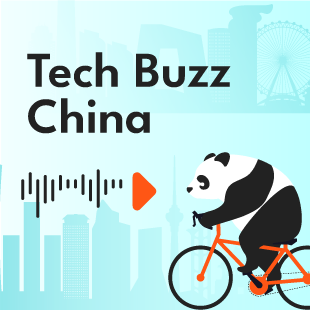Pandaily
Everything about China's Innovation
The new energy vehicle subsidies issued by the Chinese government for the past 13 years are scheduled to end this year. However, the vast majority of domestic NEV enterprises have not yet achieved profitability, and are still investing in large-scale research and development. As subsidies get smaller and smaller, making profits is now the primary focus for many of these firms.
Meanwhile, NEV manufacturers have been raising vehicle prices. BYD, for example, announced on November 23 that it would raise the guidance price of models by 2,000 yuan to 6,000 yuan ($283 – $850). On November 30, GAC Aion decided to raise the prices of its models from 3,000 yuan to 8,000 yuan.
After Tesla announced price cuts, Cui Dongshu, the secretary general of the China Passenger Car Association, said that at the end of this year, Chinese NEV makers will not witness large-scale price cuts, but may issue price increases.
SEE ALSO: Secretary-General of CPCA Believes No Huge Price Reduction in China after Tesla
One of the reasons most frequently cited is the higher battery material price. Battery-grade lithium carbonate jumped more than 10 times from 50,000 yuan/ton in early 2021. But on November 25, according to data released by Shanghai Ganglian, the price of some lithium electric materials fell, which will gradually reduce cost pressure on NEV firms.
In the first three quarters of this year, only SAIC-GM-Wuling, BYD and Tesla achieved profits, while the rest of the car companies in China have not reported profits in the new energy vehicle sector, and losses have become normal.
In the third quarter of 2022, XPeng posted a net loss of 2.38 billion yuan, compared with a net loss of 1.595 billion yuan in the same period last year. During the same period, NIO‘s net loss was 4.108 billion yuan, up 392.1% year on year. In the second quarter of 2022, Li Auto‘s net loss was 641 million yuan, a year-on-year increase of 172.2%, while the gross margin slipped to 21.5% quarter-on-quarter.
But spending on research and development is increasing. In the third quarter of 2022, NIO spent 2.94 billion yuan on R&D. Firm founder William Li said that maintaining investment of 3 billion yuan in a single quarter will become a stable level in the future. In the second quarter of 2022, Li Auto‘s R&D expenses were 1.53 billion yuan, an increase of 134.4% compared to 650 million yuan in the second quarter of 2021.
BYD represents a more successful example in the Chinese market. In the first three quarters of 2022, BYD achieved a cumulative operating revenue of 267.6 billion yuan, up 84% year-on-year, while the net profit attributable to shareholders was 9.3 billion yuan, up 281% year-on-year. BYD has adopted a self-developed strategy in the field of semiconductors, batteries and other core components, effectively avoiding the cost pressure caused by more expensive raw materials and the chip shortage, retaining more profit space.
In this case, increasing product prices is the best choice. Cui Dongshu said bluntly that BYD’s price increases have little to do with battery material prices. Affected by the official withdrawal of new energy vehicle subsidies at the end of this year, another round of price increases will likely emerge.
Sign in with google

Chinese automaker BYD outsold Tesla by nearly 200,000 vehicles globally in the third quarter of 2022, according to the latest data released by the two companies.
On Tuesday, the China Passenger Car Association (CPCA) released its National Passenger Car Market Analysis Report for the month of April.
On July 8, the China Passenger Car Association released its analysis of the national passenger vehicle market in June this year. The data shows that retail sales of passenger vehicles reached 1.943 million units in June, up 22.6% year-on-year.
When the founders of XPeng and Li Auto, two famed Chinese EV startups within a trio that also includes NIO, were busy interacting with each other on social media during a marketing relay for their newest EV lineups, NIO’s founder kept a low profile.



Pandaily is a tech media based in Beijing. Our mission is to deliver premium content and contextual insights on China’s technology scene to the worldwide tech community.
The automated manchine translation of regional languages is powered by NiuTrans.
We also support Hindi language, do you want change to it?
हम यह भी हिन्दी भाषा का समर्थन है, आप इसे करने के लिए परिवर्तन करना चाहते हैं?
We also support Punjabi language, do you want change to it?
ਸਾਨੂੰ ਇਹ ਵੀ ਪੰਜਾਬੀ ਭਾਸ਼ਾ ਨੂੰ ਸਹਿਯੋਗ ਹੈ, ਤੁਹਾਨੂੰ ਇਸ ਨੂੰ ਕਰਨ ਲਈ ਤਬਦੀਲੀ ਚਾਹੁੰਦੇ ਹੋ?
We also support Bengali language, do you want change to it?
আমরা বাংলা ভাষা সমর্থন, আপনি এটি পরিবর্তন করতে চান?
We also support Burmese language, do you want change to it?
ငါတို့သည်လည်း, မြန်မာဘာသာစကားကိုထောကျပံ့သငျသညျကအပြောင်းအလဲလိုသလဲ
We also support Nepali language, do you want change to it?
हामी पनि नेपाली भाषा समर्थन, तपाईं यसलाई परिवर्तन गर्न चाहनुहुन्छ?
We also support Tagalog language, do you want change to it?
Sinusuportahan din namin ang Tagalog wika, ang gusto mong pagbabago dito?
We also support Malay language, do you want change to it?
Kami juga menyokong bahasa Melayu, adakah anda mahu perubahan kepadanya?
We also support Indonesian language, do you want change to it?
Kami juga mendukung bahasa Indonesia, apakah Anda ingin perubahan untuk itu?
We also support Thai language, do you want change to it?
นอกจากนี้เรายังสนับสนุนภาษาไทย, คุณต้องการที่เปลี่ยนแปลงไปได้หรือไม่


